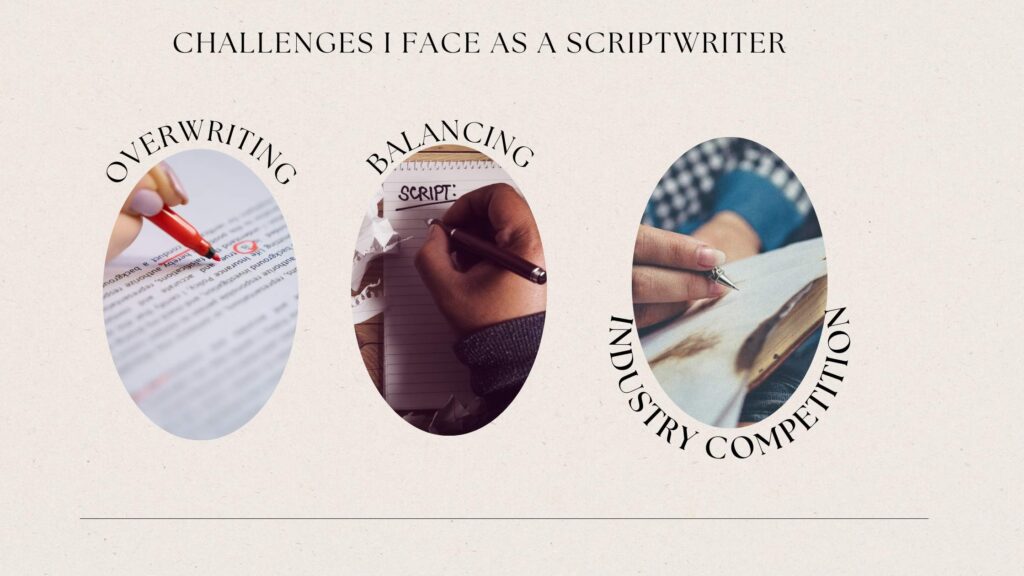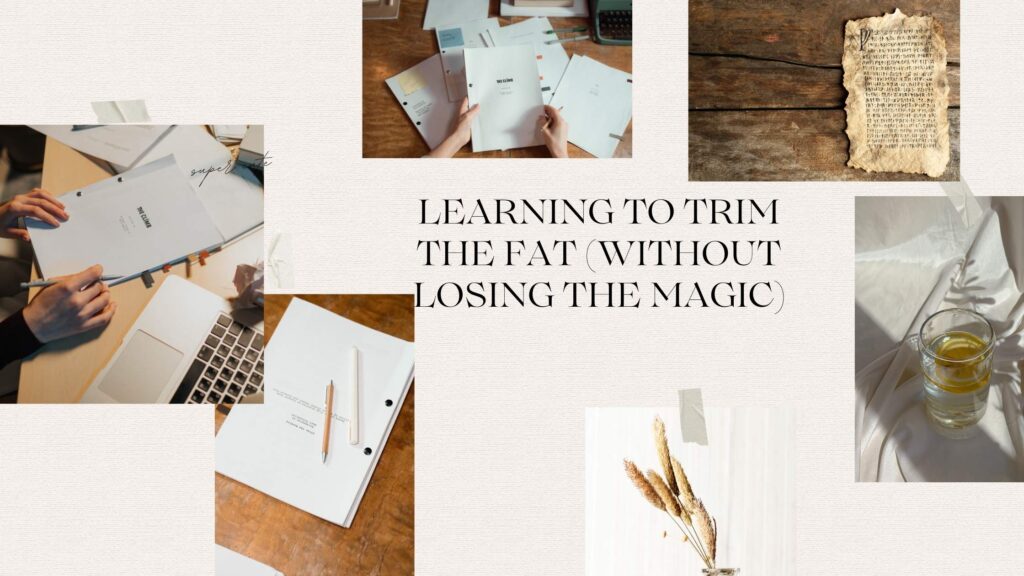Let’s be real—writing scripts isn’t just about typing words. If it were, my grocery list would be Oscar-worthy. 😜
It’s about hooking viewers, keeping them engaged, and ensuring they don’t click away in 5 seconds. That’s why I love doing this after a content strategic job.
I’ve written scripts for tons of YouTubers as a Scriptwriter. I turning rough ideas into binge-worthy content. I wrote scripts that are deep-dive essays, comedy sketches, or storytelling pieces that actually make people feel something.
But let’s be honest. Getting from a messy idea to a polished script isn’t always easy. There are rewrites, last-minute changes, and plenty of staring at a blank page like it owes me money. Here is how I do it.
The Challenges I Mostly Faces At First
Coming up with a script idea? Easy. Turning that idea into a well-structured, engaging script? Now, that’s where things get tricky as a Scriptwriter.
When I first started, my biggest challenge was getting past the “cool idea” stage. I’d have a concept that felt exciting. But when I sat down to write,
I’d think, Okay… now what?
Sometimes, the story felt too vague, the pacing was all over the place, or the dialogue sounded like robots trying to be human.
Spoiler Alert: That’s not a good thing.
Even Google doesn’t like AI content. So why human will?

Another struggle? Overwriting.
I’d cram way too much into one script. I would make it longer than a Netflix binge session. Then, I had to painfully trim it down without losing the magic. And, of course, there was self-doubt. That lovely voice in my head whispering.
What if this isn’t good enough?
Then Came The Real Balancing Act.
Creative Direction. Clients had specific visions, and I had to align my script with their ideas without losing originality. It was a fine line between delivering what they wanted and keeping my storytelling fresh and engaging.
And Let’s Not Forget Industry Competition.
Standing out in a market flooded with content. Everyone is fighting for attention. So, I had to constantly push myself to create unique, binge-worthy scripts that didn’t feel like something viewers had seen a hundred times before.
But then,
I learned to structure my ideas properly, trust the editing process, and stop second-guessing every word. Now, when I get a script idea, I know exactly how to shape it into something that works on screen, not just in my head.
How I Overcome The Challenges As A Scriptwriter?
Every script comes with its own set of challenges, but over time, I’ve learned how to tackle them head-on. Here’s how I turned my early struggles into strengths:
Breaking Down the “Cool Idea” Into a Solid Structure
At first, I’d get stuck staring at an exciting idea without knowing where to take it. Now, I break it down immediately:
- I start with a story outline—beginning, middle, and end.
- Then, I focus on key moments that will keep the audience engaged.
- Finally, I refined the pacing so the script flows smoothly from one scene to the next.

This simple structure keeps me from getting lost in my own creativity, just like content strategy. Before I start writing, I ask myself these key questions:
✅ What is the main message of this script? (Is it educational? Entertaining? Inspirational?)
✅ Who is the target audience? (What do they care about? What style of content resonates with them?)
✅ What emotional impact do I want this to have? (Should it be funny, suspenseful, or thought-provoking?)
Answering those questions clears my path. But,
No matter how great my script is, they’re gone if the first few seconds don’t hook the audience. So, I always start with something that grabs attention instantly.
Some of the techniques for a strong hook:
- A bold statement: “Everything you know about success is WRONG.”
- A surprising fact: “Did you know most viral videos follow the same formula?”
- A relatable question: “Ever had a script idea that felt perfect… until you started writing?”
- Jumping straight into action: Instead of saying, “Today, I’ll talk about…”, I start with a scene or engaging dialogue.
A strong hook keeps viewers curious and makes them want to keep watching.
Once I have the idea and the hook, I outline the main beats of the script:
- Introduction (First 30 seconds)
- Set up the main topic or conflict.
- Establish WHY the audience should care.
- Give them a reason to stay until the end.
- Main Content (The core of the script)
- Break the content into logical, easy-to-follow sections.
- Use examples, storytelling, or humor to keep it engaging.
- Ensure a smooth flow between ideas. (No jumping from A to Z without a clear connection!)
- Climax / Payoff (The “aha!” moment)
- This is where everything comes together.
- It could be a plot twist, a key insight, or a satisfying resolution.
- Conclusion (Last 10-15 seconds)
- End with a strong, memorable line.
- If needed, add a call to action (e.g., for YouTube scripts: “Like & subscribe for more!”).
Pacing is everything in a script. Too slow? The audience gets bored. Too fast? They feel lost.
What I do to maintain perfect pacing:
- Read the script out loud – If a section feels slow, I tighten it.
- Eliminate unnecessary words – Every line should serve a purpose.
- Mix up sentence lengths – Shorter lines for tension, longer ones for explanation.
- Add pauses and beats – This helps with timing, especially in dialogue-heavy scripts.
Learning to Trim the Fat (Without Losing the Magic)
One of the biggest lessons I learned as a scriptwriter was that less is more. Early on, I had a habit of overwriting. I stuffed my scripts with every little detail, over-explaining concepts and adding scenes that felt interesting but didn’t really move the story forward.

The result?
Scripts that were too long, slow-paced, and, at times, just boring.
What i did? Well,
I had to train myself to trim the fat without losing the magic of my storytelling. That meant going through multiple drafts and refining the content at every stage.
My process now looks something like this:
First, in the initial draft, I let my creativity flow without any restrictions. I write everything that comes to mind, no matter how long or unnecessary it may seem. This way, I capture all possible ideas before deciding what stays and what goes.
Next, in the second draft, I focus on cutting at least 20% of the content that doesn’t add real value. I ask myself:
- Is this line necessary?
- Does it move the story forward?
- Can this be said in fewer words without losing impact?
Often, long-winded explanations can be reduced to short, punchy sentences that hold more power.
Finally, in the final draft, I go through every line and make sure each one earns its place. Every sentence should build tension, advance the plot, or enhance the character’s voice. If a line doesn’t add something meaningful, it’s gone.
Balancing Client Vision with My Own Creativity
One of the biggest challenges I faced early on? Trying to read my clients’ minds. Spoiler alert: I’m not psychic. 🤫
I’d get a vague request like, “Make it funny but serious… but not too serious. Also, add some suspense.” Huh? 😑
At first, I’d write scripts based on what I thought they wanted. It only gets hit with endless revisions. It felt like playing scriptwriting ping-pong, and I was losing.
So, I changed my approach. Now, before writing, I interrogate (politely, of course) my clients with super-specific questions:
- Do you want this funny like a sitcom or funny like a dark comedy?
- Is the audience here for entertainment or deep insights?
- What’s one thing you don’t want in the script? (You’d be surprised how useful this one is.)
Once I get clear answers, I draft a script blueprint—a rough outline they can approve before I go full speed ahead.
Less guesswork, fewer revisions, and fewer “Can we tweak this?” emails.
Now, my scripts hit the mark without the endless back-and-forth. And best of all? I get to keep my sanity while still delivering killer storytelling!
Making My Scripts Stand Out in a Crowded Industry
YouTube is a battlefield! If your script doesn’t hook viewers in the first 5 seconds, they’re clicking away faster than me, avoiding small talk.
Early on, I thought good storytelling was enough. You also need to grab attention instantly and keep people watching.

If a client asks for a video on productivity, I don’t just write, “wake up at 5 AM and grind.” Nope. I flip the script:
- What if waking up early actually ruins productivity?
- How would a lazy person accidentally master productivity?
People love the unexpected, and I make sure my scripts deliver it.
Gone are the days of slow build-ups. Now, I start scripts with a punch—a shocking fact, a bold statement, or a question that forces curiosity. Example:
❌ “Today, we’ll talk about why people struggle with focus.”
✅ “Your brain is tricking you into being lazy—here’s how to hack it.”
Viewers have the attention span of a goldfish. I keep my scripts fast-paced, punchy, and unpredictable.
Every few seconds,
Something new happens: a joke, a twist, a cut to a crazy example.
No dead air, no fluff.
Is My Client Happy With My Script?
Well, let’s put it this way—if my scripts were terrible, I’d be out of a job faster than a WiFi drop during a Zoom call.
Early on, I’d anxiously wait for client feedback, hoping for something like “This is brilliant!” Instead, I’d get: “Hmm… can we make it funnier? But also serious? And maybe add suspense?” Ah yes, the classic “make it everything at once” request.
But now? I’ve nailed the formula. I make sure my scripts don’t just sound good on paper but actually work on screen. I keep the pacing tight, the dialogue natural, and the jokes actually funny (no forced “haha” moments here).
Plus, I always check in with my clients before going all-in, so they’re never hit with a script that’s way off from what they envisioned.
So, is my client happy? Well, let’s just say they keep coming back for more—and in this business, that’s the best review I could ask for!
Final Thoughts: The Scriptwriting Hustle
Scriptwriting isn’t just about words. It’s about bringing ideas to life and keeping audiences hooked. Sure, clients have wild requests (“Can the main character be a talking llama?”), and inspiration isn’t always on my side, but seeing my scripts turn into viral content? Totally worth it.
I love what I do—turning ideas into must-watch content. And if you ever need a killer script, you know where to find me!




